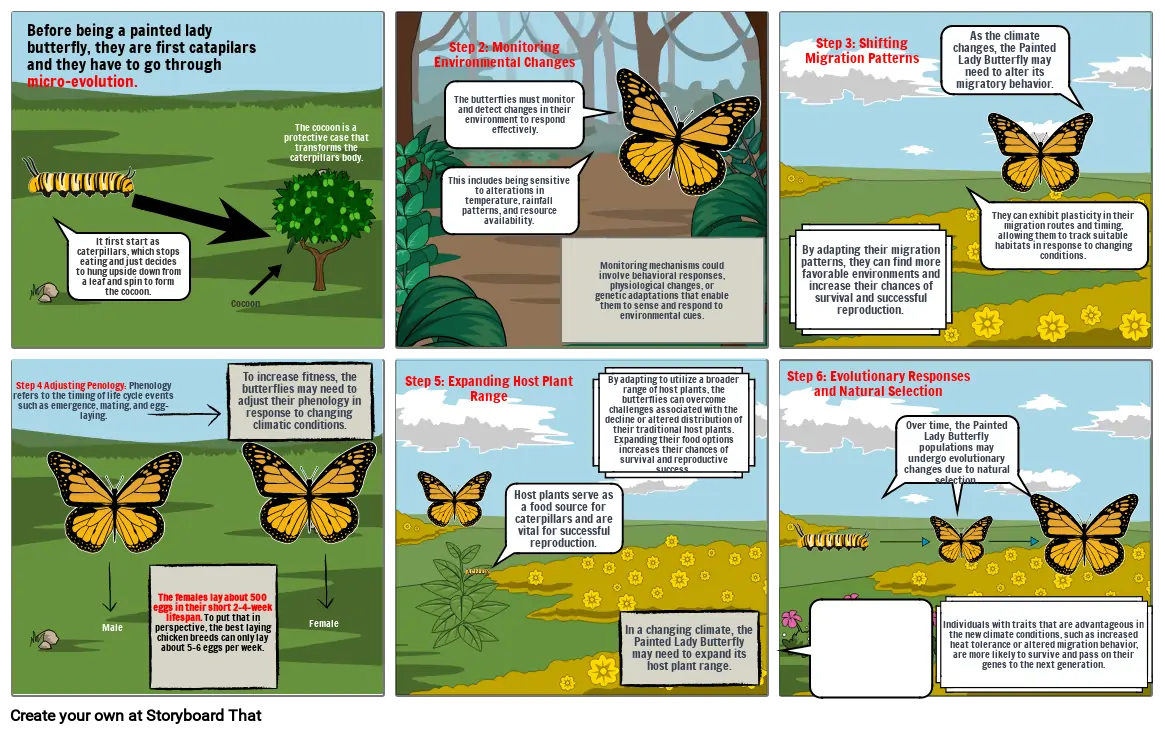Painted Lady Buterflies

Storyboard Text
- Before being a painted lady butterfly, they are first catapilars and they have to go through micro-evolution.
- It first start as caterpillars, which stops eating and just decides to hung upside down from a leaf and spin to form the cocoon.
- Cocoon
- The cocoon is a protective case that transforms the caterpillars body.
- Step 2: Monitoring Environmental Changes
- This includes being sensitive to alterations in temperature, rainfall patterns, and resource availability.
-
- Monitoring mechanisms could involve behavioral responses, physiological changes, or genetic adaptations that enable them to sense and respond to environmental cues.
- The butterflies must monitor and detect changes in their environment to respond effectively.
- Step 6: Evolutionary Responses and Natural Selection
- By adapting their migration patterns, they can find more favorable environments and increase their chances of survival and successful reproduction.
- Step 3: Shifting Migration Patterns
- As the climate changes, the Painted Lady Butterfly may need to alter its migratory behavior.
- They can exhibit plasticity in their migration routes and timing, allowing them to track suitable habitats in response to changing conditions.
- Step 4 Adjusting Penology: Phenology refers to the timing of life cycle events such as emergence, mating, and egg-laying.
- Male
- The females lay about 500 eggs in their short 2-4-week lifespan. To put that in perspective, the best laying chicken breeds can only lay about 5-6 eggs per week.
- To increase fitness, the butterflies may need to adjust their phenology in response to changing climatic conditions.
- Female
- Step 5: Expanding Host Plant Range
- Host plants serve as a food source for caterpillars and are vital for successful reproduction.
- By adapting to utilize a broader range of host plants, the butterflies can overcome challenges associated with the decline or altered distribution of their traditional host plants. Expanding their food options increases their chances of survival and reproductive success.
- In a changing climate, the Painted Lady Butterfly may need to expand its host plant range.
- Through the process of natural selection, the population gradually adapts to the changing climate, increasing its overall fitness.
- Over time, the Painted Lady Butterfly populations may undergo evolutionary changes due to natural selection.
- Individuals with traits that are advantageous in the new climate conditions, such as increased heat tolerance or altered migration behavior, are more likely to survive and pass on their genes to the next generation.
Over 30 Million Storyboards Created

